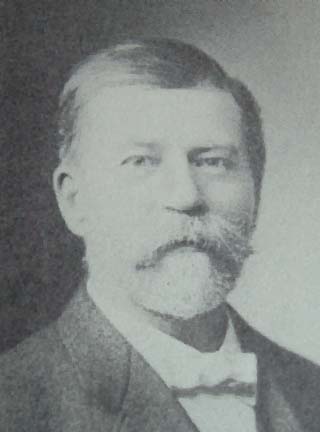
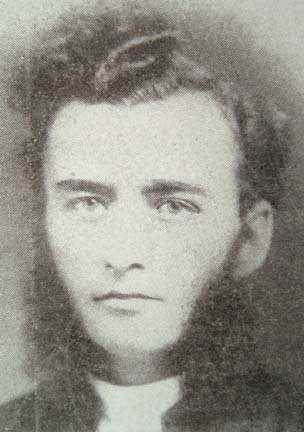
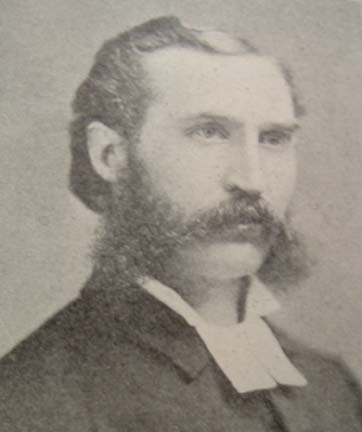
Chicago-Bladet editor John Martenson, host pastor A.N. Sweders, Professor J.G. Princell
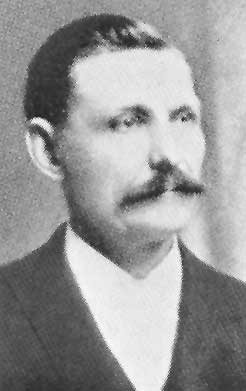

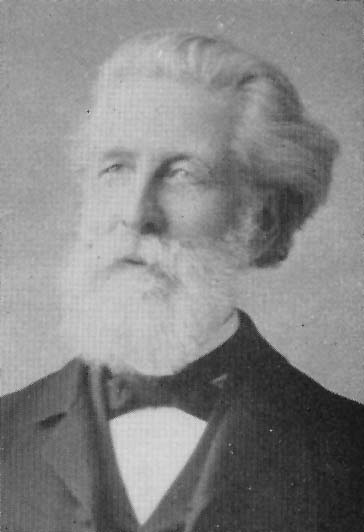

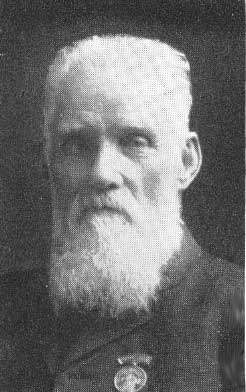
August Davis, A.L. Anderson, Karl Erixon, E. Thorell, J.W. Stromberg
Here is some biographical information on participants. We assume Princell and Martenson "need no introduction"; Sweders was the host pastor, he came to America in the company of T.N. Hasselquist, was sent to succeed Nebraska pioneer pastor S.G. Larson at Omaha's Immanuel church, and then to Swede Home in Polk county. There his insistence on regenerate membership caused "trouble" and he is also credited (or discredited) with starting a Mission congregation in nearby Stromsburg on a town lot that was "intended for the Lutherans" (Sandahl). Not dissuaded, he goes on to serve the Mead Mission church and serve as Nebraska Missionforening missionary (travelling preacher) before passing away at a relatively early age near his Stromsburg homestead. In Boone, where this account is set, he leads the Swedes in forming an independant Mission congregation, though those favoring Augustana dissent and form their own church. At some point the longsuffering Augustana leaders defrock Sweders, a distinction he holds in common with Princell.
August Davis (whom we have not before associated with Princeton, Illinois) figures in the Chicago Tabernacle history as the pastor who introduced "stormy" sessions of worship. We assume this describes "charismatic" phenomena which did not meet with approval from the majority. The Free Church history labels him "the giant who might have been," recalling perhaps his Minneapolis reputation having split one of the congregations there. Josephine Princell's biography of her husband recounts this misadventure. C.V. Bowman's recollections of visiting Davis' church with his student friends just to hear him rail against Skogsbergh is also worth reading. We have a hymnal that Davis produced. His is the name associated with the so-called "Free-free."
A.L. Anderson had his license as lay minister from the Congregational church and was briefly an instructor at Ansgar College at Knoxville, Illinois. On this date he is registered from Ottumwa, Iowa. He later served the Boone congregation and also "in the extreme east, in fields where the Free church has no work." (Golden Jubilee book)
Karl Erixon preceded Princell as president of Ansgar College, having come from Sweden with experience in operating an orphanage and working in publications. The book detailing the New York Immigrant Missionhouse tells an amusing account of his first day in that city, trying to find an address without benefit of knowing the English language. He is well known as the president of the Eastern Missionary Association among churches frequently aligned with the Congregational denomination. Later he is identified as pastor of the Moline Gustavus Adolphus Congregation which ultimately joined the Covenant.
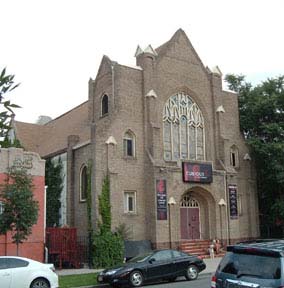
E. Thorell's labors centered in the Rocky Mountain states and in large part at the Denver congregation, a strong group whose downtown church survives as a drama theater and whose efforts were joined with the other Swedish denominations in founding the Denver Swedish Sanatorium, now Swedish Hospital. At the meeting he is registered from Minnesota.
J.W. Stromberg's early life included itinerant ministry in the colporteur style in Sweden and Denmark. Already a senior member of the ministerium when emigrating, he spent his later years at the Stamford, Nebraska congregation. Stamford is on the southern margin of the Phelps settlement, where a mill was operated on the Republican river. The name of F. Beiyon, land agent, is associated with the community as are the adjacent locations of Melrose and Orleans.
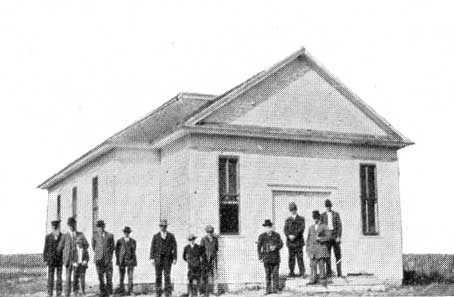
The Stamford, Nebraska church
Others present but not pictured above include:
Charles Sandquist of Oakland, who is remembered as the one who persuaded the Sioux City Missionfriends and Baptists to join forces in building a common church which endured for a time. It is he who made the comment from the floor at Boone: "I find nothing written in the scriptures to support infant baptism," which might have tweaked Princell.

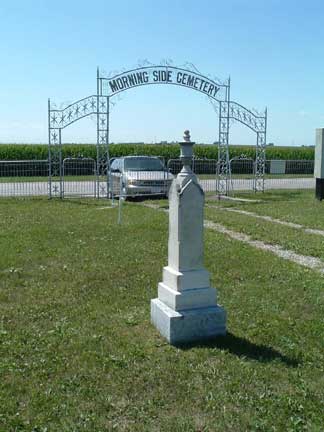
Loth Lindquist, associated with Ft. Dodge, Iowa, and whose preaching missions included a visit to Swedish Methodists in the Swede Bend area. He was initially associated with the Swedish Methodists.
N.E. Nelson of Phelps Center, Nebraska, a church formed by Fredrik Franson at the location best known for its childrens' home and adjacent to the Moses Hill Mission church.
others: P. Nelson, Boone; E. Hedlind, Madrid; N.J. Nelson, Des Moines; S.J. Bengtson, Angus, Iowa; J. Nystr÷m and [P.A.] Peterson, Kansas (curiously, there is no section for Kansas in the Golden Jubilee book); P. LanÚr, Rockford, C.H. Lundin, Brooklyn (Beresford), Dakota, Alf Zandel, L.A. Kruse, later a Des Moines pastor. We know that Leander Hallgren, land agent for Phelps Center, was on the organizing committee for this meeting (Golden Jubilee)
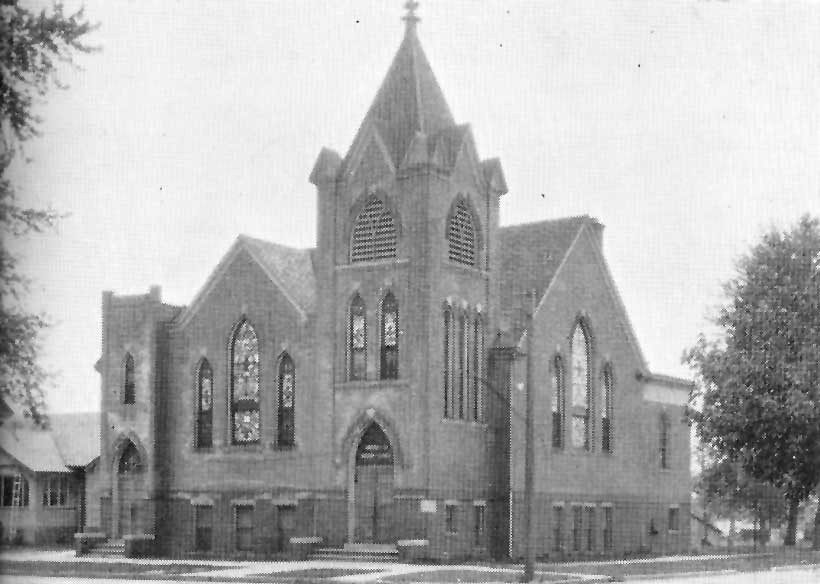
The church is the Boone Free Church as pictured in Golden Jubilee. It is not the present church in west Boone, nor is it the one Sweders wrested from the Lutherans earlier, but is at that location. It is that earlier building in which the 1884 meeting would have been held, and the participants were surely aware of its history.
We record here some initial impressions upon having read for the first time the record of the 1884 Boone Iowa meeting of Mission Friends. This is the meeting which is reckoned as the beginning of the Free Mission church with the caveat as indicated by translator David M. Gustafson.
Surely others have eagerly sought out this document for insight into the thinking of this group gathered in central Iowa, and we suspect have come away with some disappointment. This is because the reported agenda does not focus closely on polity issues so central to later interest, but is absorbed by a series of questions for discussion concerning what the Bible has to say about a range of Christian beliefs and practices.
In this it is typical of the agendas of the "mission meetings" which we have preserved for us from that period. What may be implicit in this fact is that we are witness to a spirit which continues the practice of a "readers' meeting" in old Sweden, one which has been liberated in this new land from the stigma of the conventicles act or other prejudice, and has become itself such a soul-satisfying thing that any attempt to "go beyond" it, to "institutionalize" it if you will, would be a mistake.
There was a concurrent meeting planned for Boone; the Ansgar College association. This is another story, but not unrelated since Princell is at its head and the future of the school in doubt. According to Karl Olsson no minutes of such a meeting survive and there seems to be some question whether it was held. Princell was in the process of urging the Ansgar and Mission Synods to dissolve and, in spite of his antidenominational views, reorganize along the lines of the Covenant of Sweden. His hope seemed to be that Ansgar College would be adopted by this new alliance.
Much has been written about these mission meetings, yet perhaps they remain obscure. An insight appears when we learn that in the Nebraska conference of the Augustana Lutheran church, pastors are urged not to forego attendance of their denomination's mission meetings which are still being conducted as part of their home missions outreach! Evidently the younger pastors' behavior in this regard had become lukewarm. Soon they would be completely extinct among all the Swedish groups unless one might perceive faint echoes in the practice of "annual meetings". Like the morning dew, they were disappearing as the operative mode for Swedish Mission Friends. But those at Boone were among those who would most strongly resist this change and other such changes.
Because editor John Martenson stood in the front lines of this conservatism, we have to ask a question about the record itself. It comes to us through his editorial lens. Might he have been tempted to refine the prose of his own reported contributions to the discussions for publication, or that of his most prolific contributor, J.G. Princell? Just a thought. There is enough realistic candor in the reporting to secure some confidence in Martenson's journalism. We wonder if his concluding on the dramatic question asked by Sweders concerning baptism might be editorial.
Having mentioned Princell, the record is a case study in that individual's ability to dominate a discussion. Notoriously long-winded, he may have been the reason for the "five minute rule". We are on safe ground in presuming that he invariably violated this rule. But aside from length, it is the content of his contributions that are arresting. In this account, we can see him drop something of a bombshell on the faithful at Boone. And it has nothing to do with the "denomination" question.
It takes far less than five minutes to introduce hot controversy into a meeting. The question of the mode and meaning of baptism would do it in a wide array of churches, and someone (it is Charles Sandquist) let the cat out of the bag at Boone. Forgive me for this bit of speculation, but this is what I think happened:
Princell is in dread of revisiting this old controversy: should infants be baptized, should baptism be by immersion, is rebaptism permissable, etc. He is among a dwindling number of the free Mission pastors who holds to infant baptism, and all are aware of this. With his extensive reading in original sources and remarkable reasoning ability he decides to derail this discussion in the following way: he suggests removing actual water from the equation entirely!
The result is completely predictable. There is a "deer in the headlights" moment for the assembly, with a few feeble attempt to "clarify" by questions that try not to be objections, but the contestants that were moments before getting their steam up have suddenly lost all pressure. Read the account, and see if you do not agree that this is what is happening. Though Martenson comes to his defense, he concludes his Chicago-Bladet report with Sweders' exasperated comment: "This was an altogether new matter that I have just heard with my ears".
Then it is time for lunch.